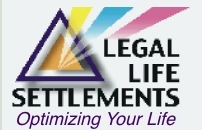 |
 |
|||||||||||||
Your Hidden Business AssetsThroughout the business cycle, companies purchase numerous business life insurance policies for risk management, employee benefit and investment purposes. When a company is up for sale, some of these life contracts may become obsolete because the reasons for their purchase are no longer relevant. And after a company is sold, additional business life policies may outlive their usefulness. Many types of business policies may qualify for a life settlement, such as, universal life, whole life, survivorship and term. Business owners are usually (pleasantly) surprised to discover that an expendable business term policy may actually have a life settlement value, even though the policy has no cash redemption value. Many entrepreneurs (as well as their legal, financial and business advisors) mistakenly believe that the only disposition option for a superfluous business term policy is simply to allow it to lapse and then write off all of those years of premium expenditures as an essential yet unrecoverable business expense. Furthermore, with cash value business life policies (universal, variable, variable universal and whole life), the uniform belief has been that the only way to recover a portion of the investment in these life contracts is to cash surrender the policy back to the originating insurance company. Unfortunately, this typically yields only 4% of the face value¹. Because the average life settlement payout is 13% of the face value², selling your obsolete qualified business life contracts in the secondary life insurance market can provide a much higher return on your investment. See How much will I be offered for my policy?. Upon deciding to sell your company, the following business life policies may become unnecessary and a life settlement can be an effective asset optimization technique for converting these illiquid capital assets into significant immediate cash, which can then expedite your company’s sale for the desired price and on favorable terms. |
||
|
1. Key-person policies protect a firm from financial loss due to the death of key executives. The need for these policies may end when a company is put up for sale, and, unfortunately, retiring business owners typically do not recognize the enormous hidden value that may exist within these business assets. Instead, these policies are usually lapsed, cash surrendered or summarily transferred in a company asset or stock sale to whomever purchases the company. If a seller is unaware of the life settlement disposition option, a savvy buyer may be able to acquire these valuable assets, and then sell them for their true market value. 2. Split-dollar policies are used as a life insurance financing technique between an employer and employee. A life settlement may be a lucrative exit strategy from these complex contracts by offering both the retiring owner and the insured-employee considerable funds in excess of the cash surrender value, which may better satisfy changing financial priorities. 3. Using policies to fund a qualified pension or non-qualified retirement plan, such as, a 412(i) plan or a deferred compensation plan, is a common business planning technique. An exiting entrepreneur may be able to sell these policies in the life settlement marketplace and wring more money out of these dormant assets than either borrowing against the cash value or cash surrendering them back to the original issuer. 4. Policies funding employee benefit plans, such as, retiree health benefits as well as executive bonus, stay bonus or phantom stock plans, may also hold more life settlement value than cash redemption value for both the employer and the insured-employee (who may also be the employer) when an owner isn’t interested in continuing the premium payments in anticipation of selling the firm and retiring. 5. Policies securing business loans outlive their useful purpose when the debts are settled, and selling them can be a very profitable disposition strategy. To raise the necessary cash to pay off a business loan, a company owner may want to sell no longer needed qualified key-person and split-dollar policies as well as policies funding retirement and employee benefit plans. The cash windfall from selling these superfluous life contracts can be used to pay down business debts, which may better position the company for sale. After your company is sold, the following business life contracts may no longer be needed, and selling them in the secondary life insurance market can yield significantly more money than cash surrendering or lapsing them, thereby facilitating retirement and legacy goals. 1. Policies funding stock redemption or cross-purchase buy/sell agreements, acquired to ensure a smooth transition of a co-owner’s business interest, may be rendered obsolete upon a company’s sale because the original protection purpose for which the policies were purchased is no longer valid. These policies should never be lapsed or cash surrendered prior to being fair market value appraised by a high-quality, reputable life settlement firm because a qualified life policy may generate substantially more profit than its cash surrender value, especially if a buy/sell life contract is a term policy, which has -0- cash redemption value. 2. Estate liquidity policies, used to protect against a liquidity crisis upon an owner’s death, may become unnecessary due to the cash realized from a firm’s sale. Moreover, the proceeds derived from selling these policies (as well as the money saved from discontinuing expensive premium payments) may further increase liquidity. These funds can be repositioned into more appropriate investment vehicles. 3. Estate equalization policies, purchased for family members not chosen to participate in a company’s continuation, may also no longer be needed once the company is sold. Sophisticated gifting and estate planning techniques may then be employed to equitably distribute the cash created from selling the company as well as life settling these expendable policies. For years, exiting entrepreneurs have (unknowingly) left too much cash behind when selling their companies. This is why Legal Life Settlements is dedicated to raising awareness of this innovative asset optimization tool among retiring business owners. To optimize your life, We’re Here For You, 24/7 offering a complementary and confidential analysis of your business life insurance policies to determine their expendability as well as their life settlement viability. Analyzing the expendability of your business life policies, coordinating the sale of your obsolete policies with the sale of your company, safeguarding your privacy and securing the highest quality institutional offer demand specialized advisory skills in exit planning, business life insurance and life settlements. Working with Legal Life Settlements, an independent specialty M&A advisory firm with expertise in these disciplines, ensures a successful, efficient transaction. Life Settlement Illustrative Examples: Please be aware that because the particulars of our cases are strictly confidential to safeguard client privacy, these illustrations are solely intended to demonstrate the potential benefits of a life settlement. Because each life settlement transaction is unique, examples are not presented as an indicator of a precise purchase price for a specific life policy. Three business partners, ages 66, 68 and 70 were the principals of a successful company. To fund a cross-purchase buy/sell agreement, each partner owned two $3,000,000 term policies (no cash surrender value) on the lives of the other partners. Seeking to sell their firm, these entrepreneurs received no offers that they felt were adequate for achieving their retirement and legacy goals. Unfortunately, their legal, financial and business advisors were all unaware of the enormous value hidden within these business term policies, believing that they were worthless due to having -0- cash redemption value. Instead of lapsing the policies and receiving no return on the premiums they paid for many years, these three wise men sold their policies to institutional investors and received unexpected cash windfalls. By coordinating the sale of their company with the sale of their obsolete buy/sell business life policies in the secondary life insurance market for approximately $600,000 each, these owners were able to quickly sell their company at a reduced all-cash price because the life settlement proceeds provided the extra money needed to fill the gap between the selling price and the buying offer. A retiring business owner wanted to recover capital from his $500,000 dispensable key-person policy. Instead of cash surrendering this universal life policy back to the originating insurer for only $25,000, this smart entrepreneur was able to sell this capital asset for $100,000 in a life settlement transaction, using the proceeds to supplement his retirement income. A 67 year-old entrepreneur had a $5,000,000 business term life policy that was used as collateral for a business loan. Deciding to use personal funds to settle this debt to better position his company for sale, this policy was no longer needed. After reading an article on how business life settlements can help retiring business owners extract maximum value when selling their companies, this clever business owner had this unnecessary policy appraised rather than simply lapsing it. To his pleasant surprise, he received a $1,050,000 high-quality offer—dramatically more than it’s -0- cash surrender value. The proceeds expedited the company's sale by enabling the owner to reduce his required selling price and still exit with the desired cash amount. When they decided to sell their business and retire, four business partners wanted to cash surrender their four company-owned $1,000,000 universal key-person life contracts for $200,000. Instead, these intelligent partners liquidated these expendable business assets by life settling them for $600,000, and used the proceeds to resolve a pending lawsuit, thereby enhancing the company’s fundamentals in preparation for a quicker and more profitable sale. A 72 year-old entrepreneur had secured numerous term and cash value business life contracts, including: • One $15,000,000 policy for funding a non-qualified retirement plan. Upon putting her company up for sale, this savvy entrepreneur wanted to raise cash to pay off her business loan, so she sold her no longer needed $15,000,000 non-qualified retirement plan funding policy for $3,070,000 as well as her two $5,000,000 key person policies for $2,100,000. She used the proceeds to settle her business debt. She then sold the superfluous $18,000,000 business loan policy for $3,710,000, contributed this cash to her favorite church, and received a significant charitable income tax deduction. After her company was sold, Ms. Entrepreneur sold her unnecessary $14,000,000 estate liquidity policy in the secondary life insurance market for $2,815,000, which she used to purchase a dream retirement condo in Hawaii. Endnotes 1. “Turn Unneeded Policies Into Cash: A Life Settlement Can Be A Better Alternative Than Surrendering A Policy,” Journal of Accountancy, September 2005, James D. Warring 2. U.S. Government Accountability Office, 2010 |
||
|
Privacy Policy | Legal Notice | Site Map |
|


